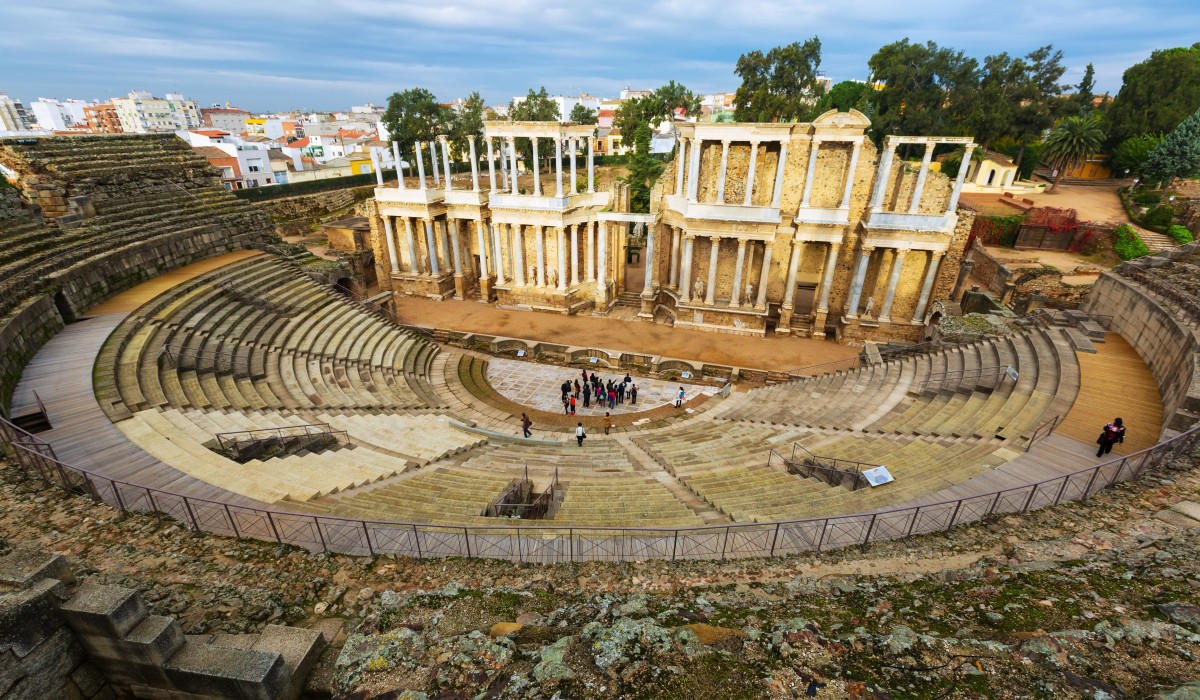
The Iberian Peninsula was a highly valued and important territory for ancient Rome. Roman power dominated for some 600 years. History buffs, can visit traces of that era remain all over Spain. This post compiles the most impressive Roman ruins in Spain.
First, however, we will talk about the importance of Hispania for ancient Rome. The Iberian Peninsula became strategically important when Hamilcar Barca, Carthaginian general and father of the legendary Hannibal, set his sights on it to expand Carthage's dominion and to compensate for the economic losses imposed by Rome as a result of the First Punic War.
In an attempt to alleviate this situation and the loss of Sicily, Carthage directed its expansion towards the Iberian Peninsula, partly due to the region's rich natural resources. The conquest began between 237 and 238 BC, under the leadership of the Barca family: Hamilcar occupied Gadir (Cadiz), Hasdrubal the Fair founded Qart Hadasht, which would later be known as New Carthage (Cartagena), and Hannibal penetrated as far as the centre of the peninsula.
In 219 BC, Hannibal laid siege to Sagunto, present-day Valencia. Rome saw this act as a provocation and a violation of previous treaties between Rome and Carthage. In response, the Romans demanded that Carthage surrender Hannibal, but Carthage refused.
The Second Punic War broke out in 218 BC, as a result of this disagreement and the accumulated tensions. That same year, Hannibal performed the epic feat of crossing the Alps on elephants to bring the war to the gates of Rome.
Rome, recognising the strategic importance of the Iberian Peninsula, sent armies to Hispania. The first Roman intervention took place in the same year, when the brothers Gnaeus and Publius Cornelius Scipio - uncle and father of Scipio Africanus, respectively - landed on the peninsula intending to cut off Hannibal's supply lines and challenge the Carthaginians directly on their own territory.
Despite some initial setbacks, the Romans, over time and through various campaigns, managed to advance, winning key battles and allying with local tribes dissatisfied with Carthaginian rule. One of the most decisive victories came at the Battle of Ilipa, near present-day Seville, in 206 BC.
With time and after the final defeat of Carthage in the Second Punic War in 201 BC, Rome consolidated and expanded its control in Hispania, confronting the various local tribes and beginning a long process of Romanisation in the region, the remains of which have survived to the present day. Now that autumn is here, it is a good time to visit some of Spain's Roman ruins.
Itálica, Santiponce
Some of Spain's most impressive Roman ruins are in Italica, an ancient Roman city near present-day Santiponce, in the province of Seville. It is known for being the first Roman city founded on the Iberian Peninsula and the birthplace of two Roman emperors, Trajan and Hadrian, two of the so-called "five good emperors".
Italica was founded in 206 BC by the Roman general Publius Cornelius Scipio Africanus as a settlement for soldiers wounded in the battle of Ilipa, where the Romans defeated the Carthaginians during the Second Punic War.
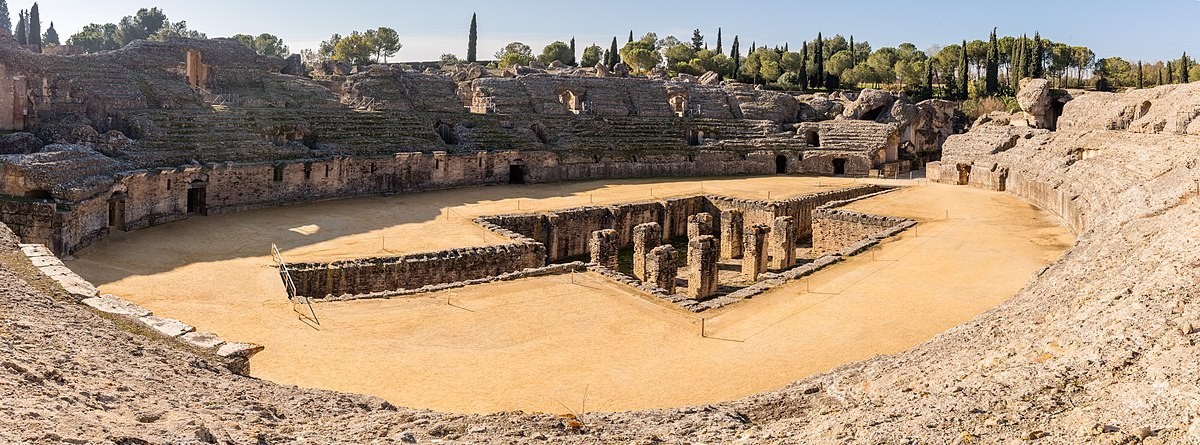
One of its most impressive monuments is the amphitheatre, one of the largest in the Roman Empire. At its peak, it could hold more than 25,000 spectators. Gladiatorial combats and other public spectacles were held here.
For fans of the Game of Thrones series, it is interesting to note that the amphitheatre of Italica was used as the setting for the Dragonpit in the seventh season.
Baelo Claudia
Baelo Claudia, located in the province of Cadiz, near the Strait of Gibraltar on the beach of Bolonia, is an archaeological treasure of Roman Hispania. Founded at the end of the 2nd century BC, it reached its peak in the 1st century AD. Its excellent state of preservation allows visitors to have a clear vision of what a Roman city was like during that period.
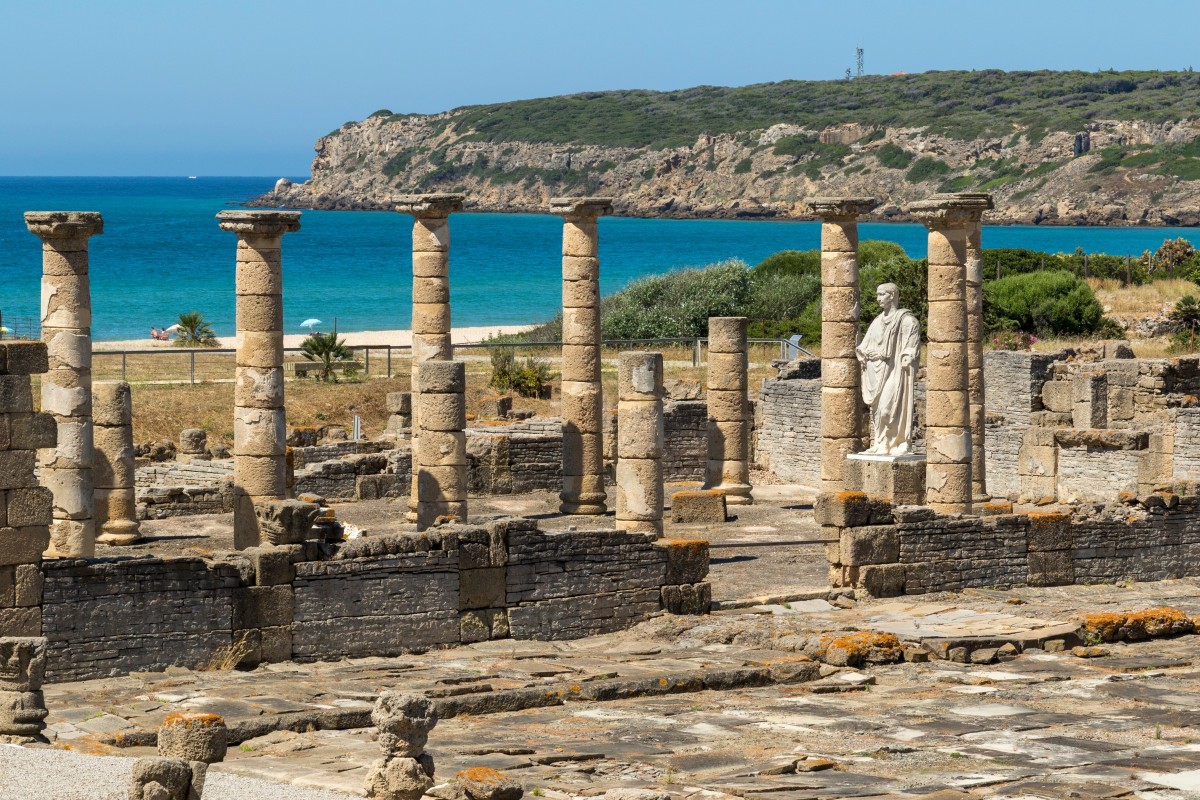
The city specialised in garum production, a fish sauce made from fermented offal and salted fish, products that were highly valued throughout the Mediterranean. The heart of the city was the forum, surrounded by important buildings such as the basilica - used as a court of justice - the curia, the seat of the municipal council, and several temples. Among these temples, those dedicated to Juno, Jupiter and Minerva were particularly notable, although there is also a temple dedicated to the Egyptian cult of Isis, showing the city's religious diversity.
The city walls - although preserved only in certain areas - together with entry points such as the Carthage Gate, are evidence of the city's defensive and organisational structure.
The baths were essential to Roman life, and at Baelo Claudia, we can see different rooms, from the 'caldarium' to the 'frigidarium', places dedicated to hygiene, leisure and socialising. Finally, the market, or 'macellum', of which the bases of the columns are still preserved, shows us where commercial transactions were carried out.
Tarraco, Tarragona
Tarraco (today known as Tarragona) was one of the main Roman cities on the peninsula. It was the capital of the province of Hispania Citerior during the Roman Republic and later of the province of Hispania Tarraconensis during the Roman Empire.
Tarraco was founded before the arrival of the Romans by the Iberians but became a Roman military base during the Second Punic War in 218 BC thanks to Gnaeus Cornelius Scipio, uncle of Publius Cornelius Scipio Africanus.
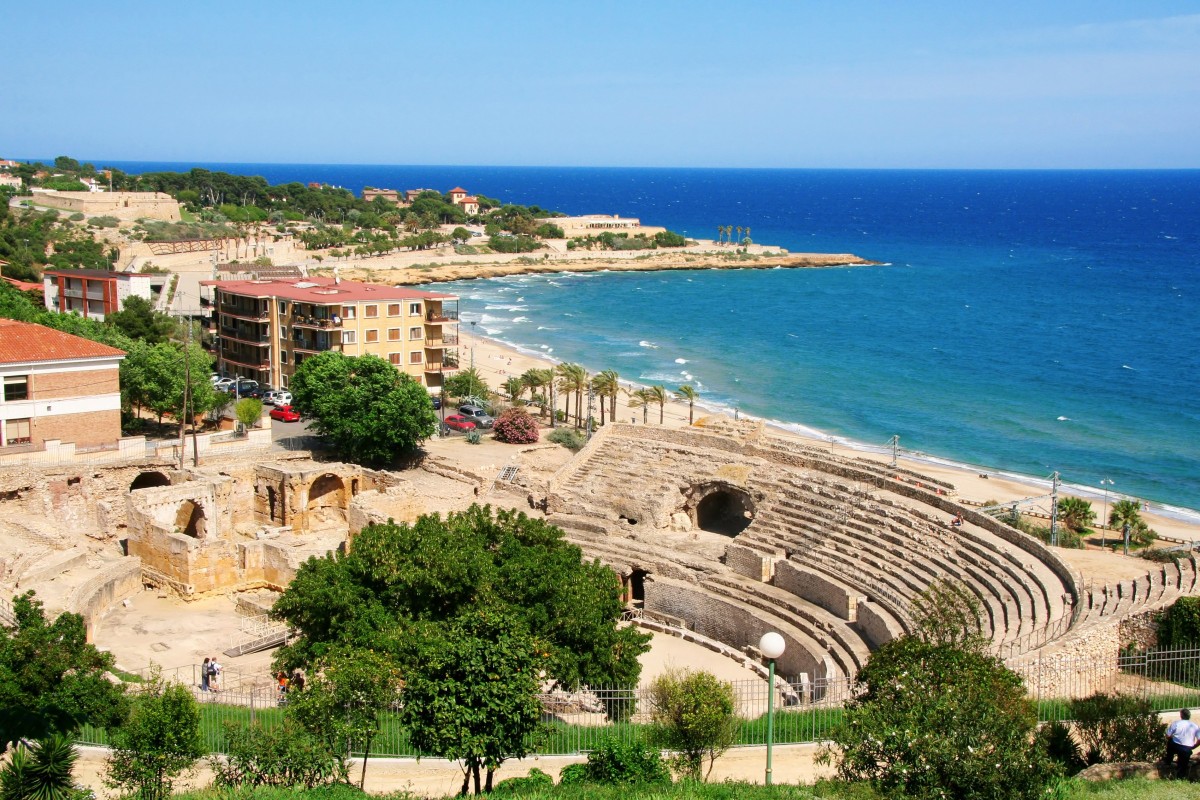
Here are some of the most outstanding Roman ruins in Tarraco:
- The amphitheatre: Situated by the sea, this impressive amphitheatre used to host gladiatorial fights and other spectacles. You can see the stands, the underground halls and the arena. Inside the amphitheatre, you can also see the remains of a Visigothic basilica and a medieval church.
- The Roman circus: Although a large part of the circus is under what is now Tarragona, some parts, such as the vaults and corridors, are well preserved. It was here that chariot races were held.
- The Roman forum: The epicentre of Roman Tarraco, where commercial, judicial and religious activities took place.
- The Roman wall: Part of the original wall, built in the 2nd century BC, still surrounds the old quarter of Tarragona. You can walk along some sections and see the defensive towers.
New Carthage Ruins, Cartagena
New Carthage, modern-day Cartagena in Spain, was founded around 227 BC by the Carthaginian general Hasdrubal the Fair, son-in-law of Hannibal's father Hamilcar Barca. The creation of this city was part of Carthaginian efforts to expand and consolidate its presence in the Iberian Peninsula. Hasdrubal established Carthago Nova as a naval base and an important economic centre, thanks to the wealth of the nearby mines.
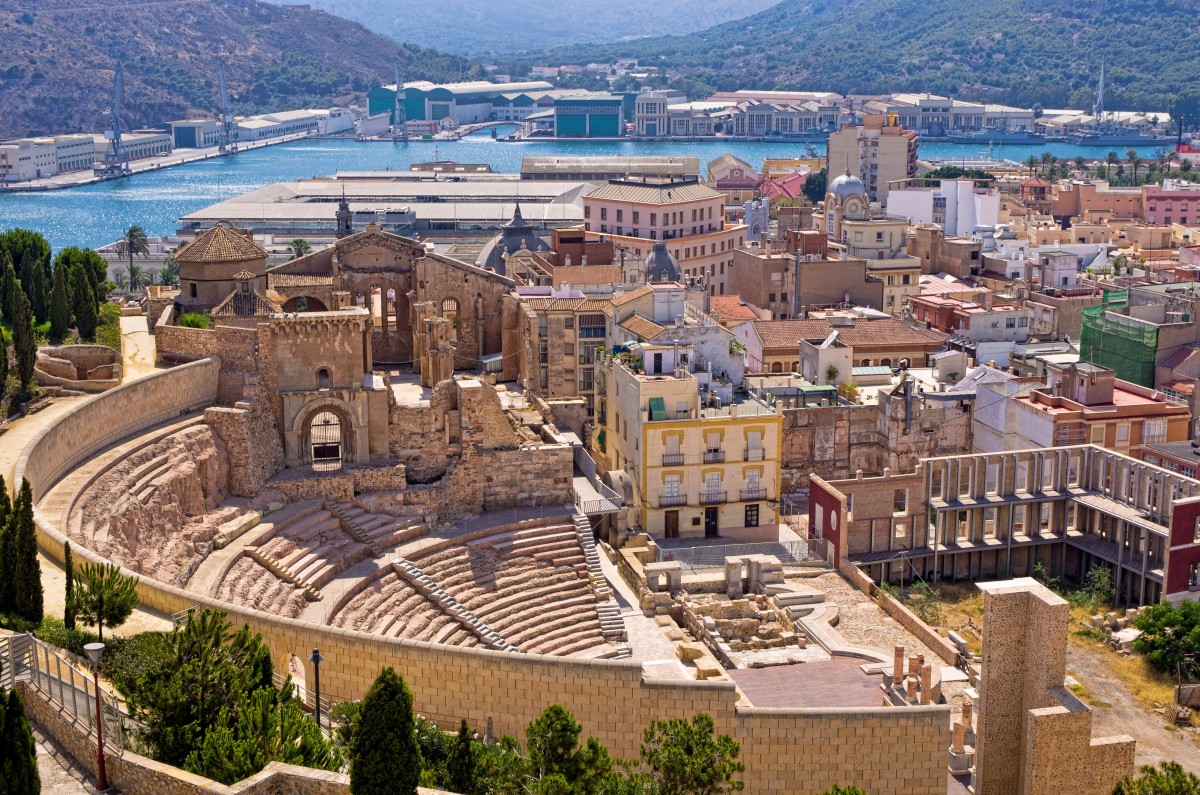
During the Second Punic War (218-201 BC), in 209 BC, Scipio Africanus waged a campaign to take New Carthage, believed to be impassable. Thanks to his audacity, he achieved the seemingly impossible.
Taking advantage of most Carthaginian forces being occupied in other parts of the peninsula, Scipio decided to attack New Carthage with a surprise invasion. He divided his army in two. Half attacked the city from the north, while the other half went south, where the defences were weaker.
Before the attack, Scipio had learned that the lagoon of New Carthage was poorly defended and that its waters were shallow. Taking advantage of the low tide, he sent about 500 men to climb the wall in this area and open the city gates. The Roman legions then penetrated the capital of Punic power on the Iberian Peninsula and succeeded in conquering it.
Several Roman ruins remain from those times, which are open to visitors in Cartagena:
- The Roman Theatre: One of the city's most emblematic monuments. It was built in the 1st century BC and has a capacity for more than 6,000 spectators. In the 3rd century AD, with the rise of Christianity, part of the theatre was reused to build an early Christian basilica. It was not until the end of the 20th century that major excavations and restoration work restored it to its former glory.
- The Roman forum: Located in the centre of the ancient city, buildings such as temples, porticoes and other buildings associated with the daily and religious life of New Carthage have been uncovered here.
- The city walls: Although the walls of Cartagena have Carthaginian origins, they were extended and reinforced during the Roman occupation.
Segovia Aqueduct
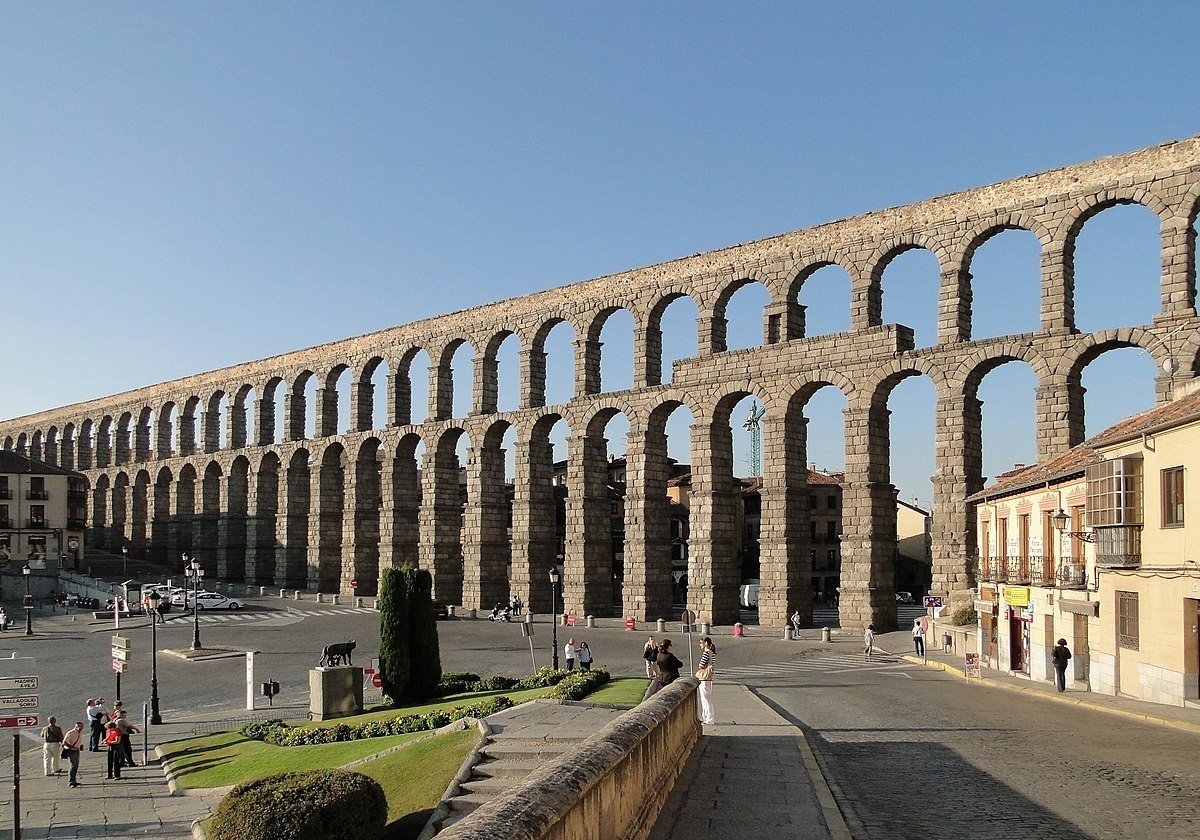
Segovia's aqueduct is one of the most famous Roman structures in Spain. It is one of the best-preserved aqueducts from Roman times. It is believed to have been built around the 1st century AD and has been in use ever since. Measuring some 15 kilometres long, the most impressive part is the section that crosses the city with double arches reaching a height of almost 30 metres.
Augusta Emerita , Merida
Known as Augusta Emerita in Roman times, Merida is one of the best-preserved Roman cities in Spain. Founded in 25 BC by Emperor Augustus, it quickly became one of the main cities of Roman Hispania and was the capital of the ancient province of Lusitania.
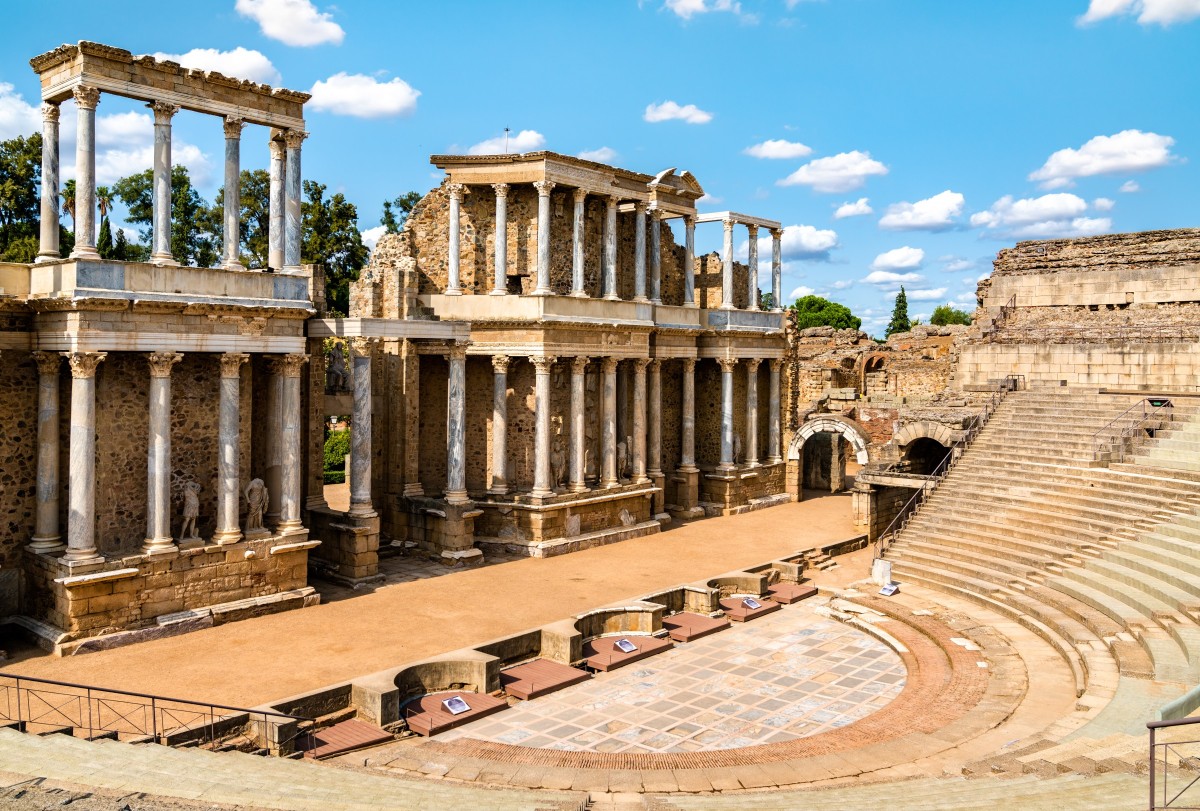
The 1st century BC Roman theatre is one of the most impressive and best preserved in the country. It was designed to seat more than 6,000 spectators, and even today, after 2,000 years, it is still used for musical events and theatrical performances, demonstrating the masterful engineering and design of the Roman era. The structure, with its splendid ornamentation and grand columns, evokes the magnificence of ancient Rome.
Close to the theatre is the amphitheatre, built in around 8 BC. This grandiose oval structure was used for gladiatorial combats and animal shows.
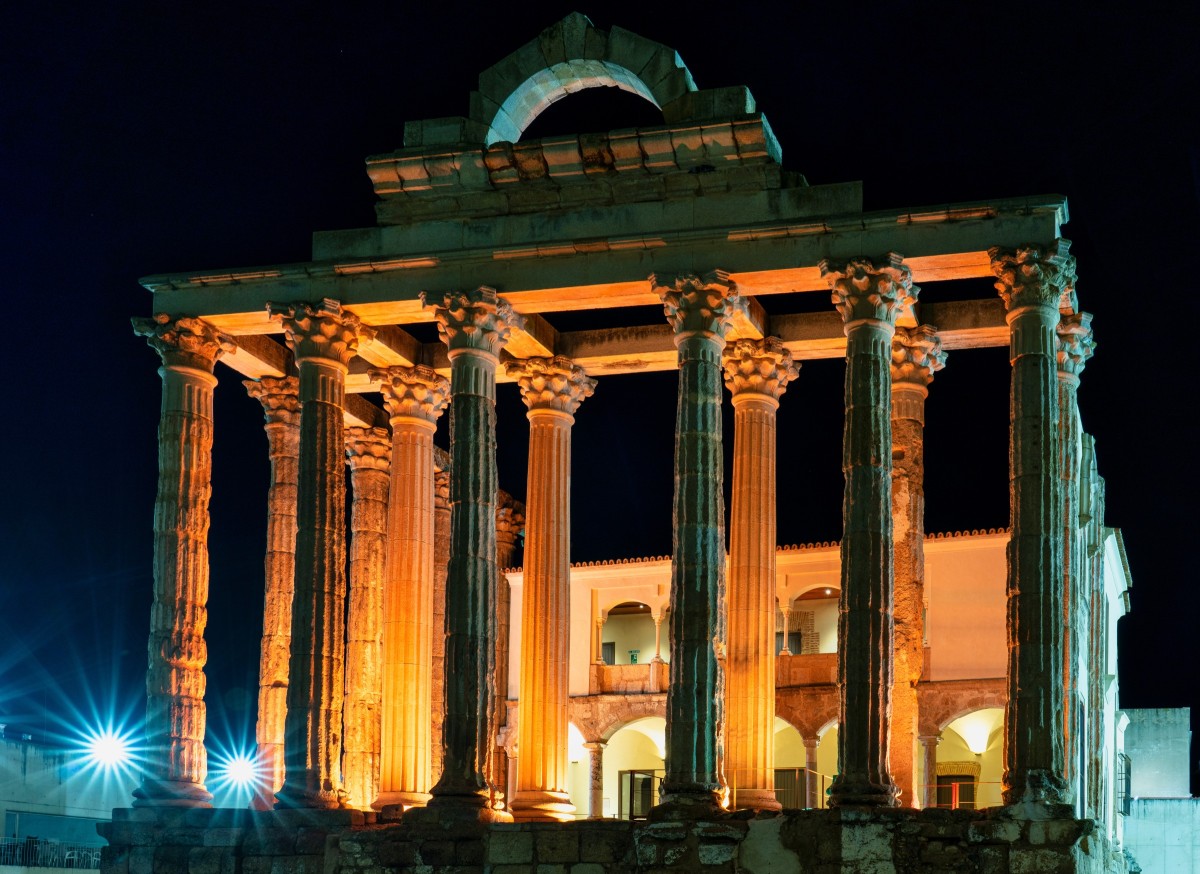
The Temple of Diana is another of the remains of ancient Rome now open to visitors in Merida. Although over time it was adapted for other uses and underwent modifications, it still conserves parts of its original structure. Its sturdy Corinthian columns and majestic design make it an essential visit for any history and archaeology lover.
Finally, although the city has more Roman ruins, it is worth mentioning the Aqueduct of the Miracles. Although only a part of what it was in its entirety remains, its arches supported by brick pillars and its length of several kilometres demonstrate the Romans' advanced engineering.
Tower of Hercules, La Coruña
The Tower of Hercules, located in La Coruña, Galicia, is a Roman lighthouse dating back to the 1st century AD, built under the rule of Emperor Trajan. It is the oldest Roman lighthouse in the world that is still in operation and, according to legend, was erected on the site where the hero Hercules buried the head of the giant Geryon after defeating him. Over the centuries, the tower has undergone several restorations, the most significant being in the 18th century, which gave it its current neoclassical appearance, although inside, it still retains the essence of the original Roman structure.
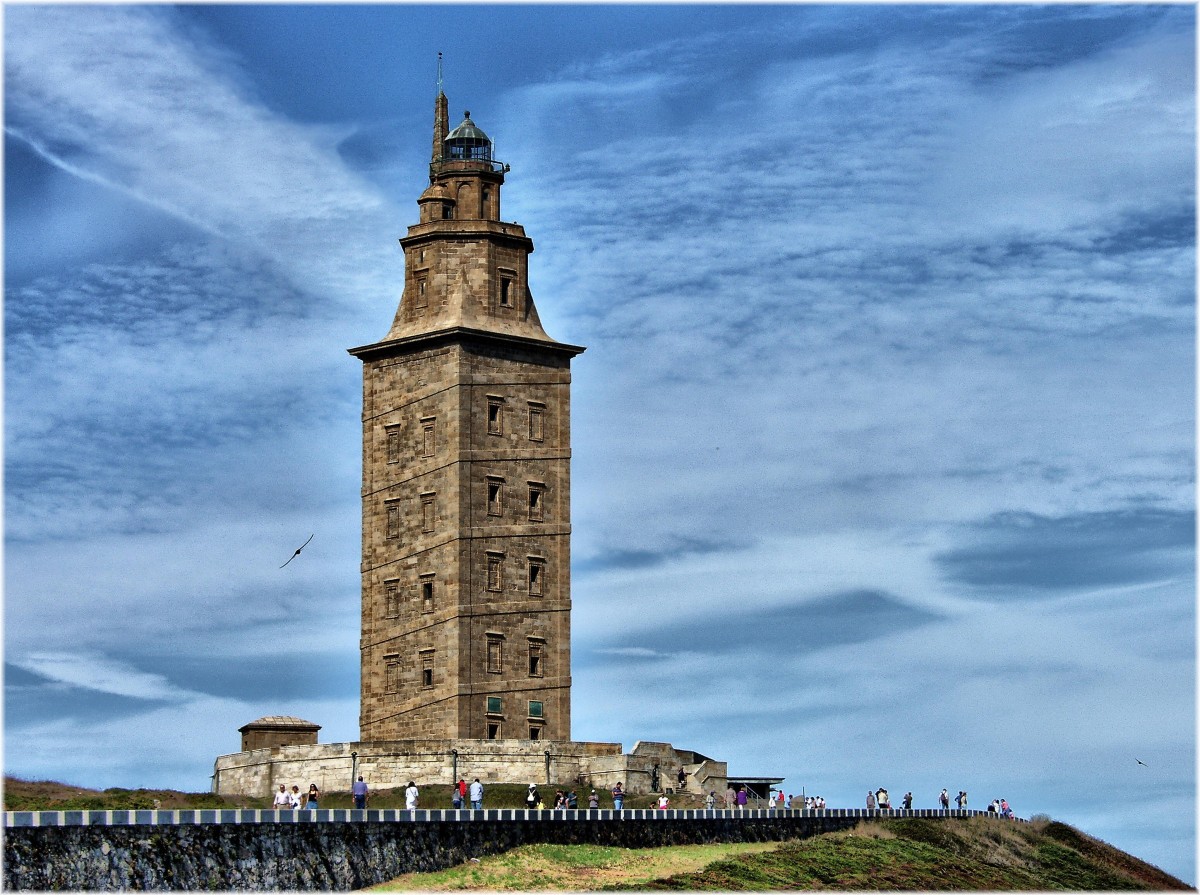
In 2009, UNESCO listed it as a World Heritage Site, recognising its unique historical and cultural value. In addition to its function as a lighthouse, the tower offers stunning panoramic views of La Coruña and the Atlantic Ocean. Surrounded by a landscaped area with sculptures and a sculpture park, the Tower of Hercules has become an emblematic symbol of the city and the entire region of Galicia.
Roman Wall of Lugo
The city of Lugo, originally known as Lucus Augusti in honour of the Roman emperor Augustus, was founded in the 1st century BC. The most outstanding and best-known feature of Lugo is undoubtedly the Roman wall. This wall surrounds the old town and is one of the best-preserved examples of Roman fortification in Europe.
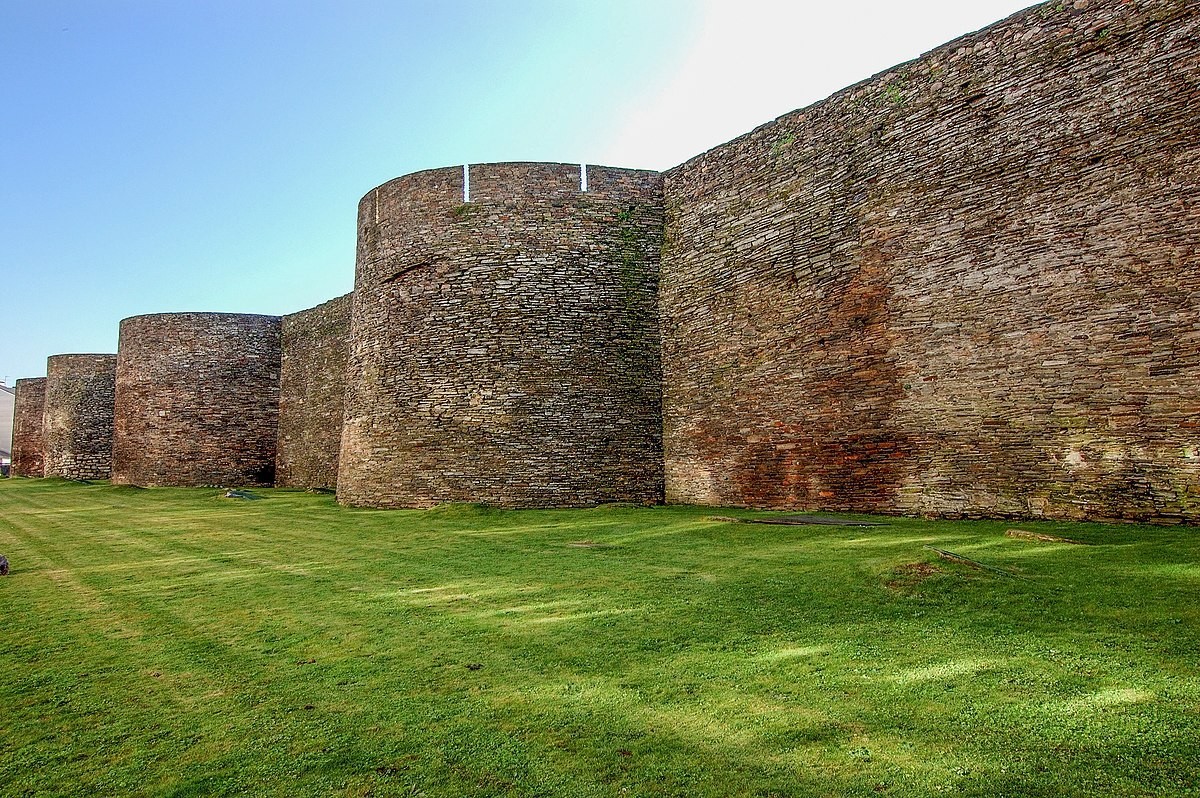
Its construction began in the 3rd century AD, and its main function was defensive. The perimeter is more than two kilometres and features numerous towers and gates. You can walk along the entire length thanks to a promenade that offers panoramic views. In 2000, the Roman walls of Lugo were declared a UNESCO World Heritage Site.